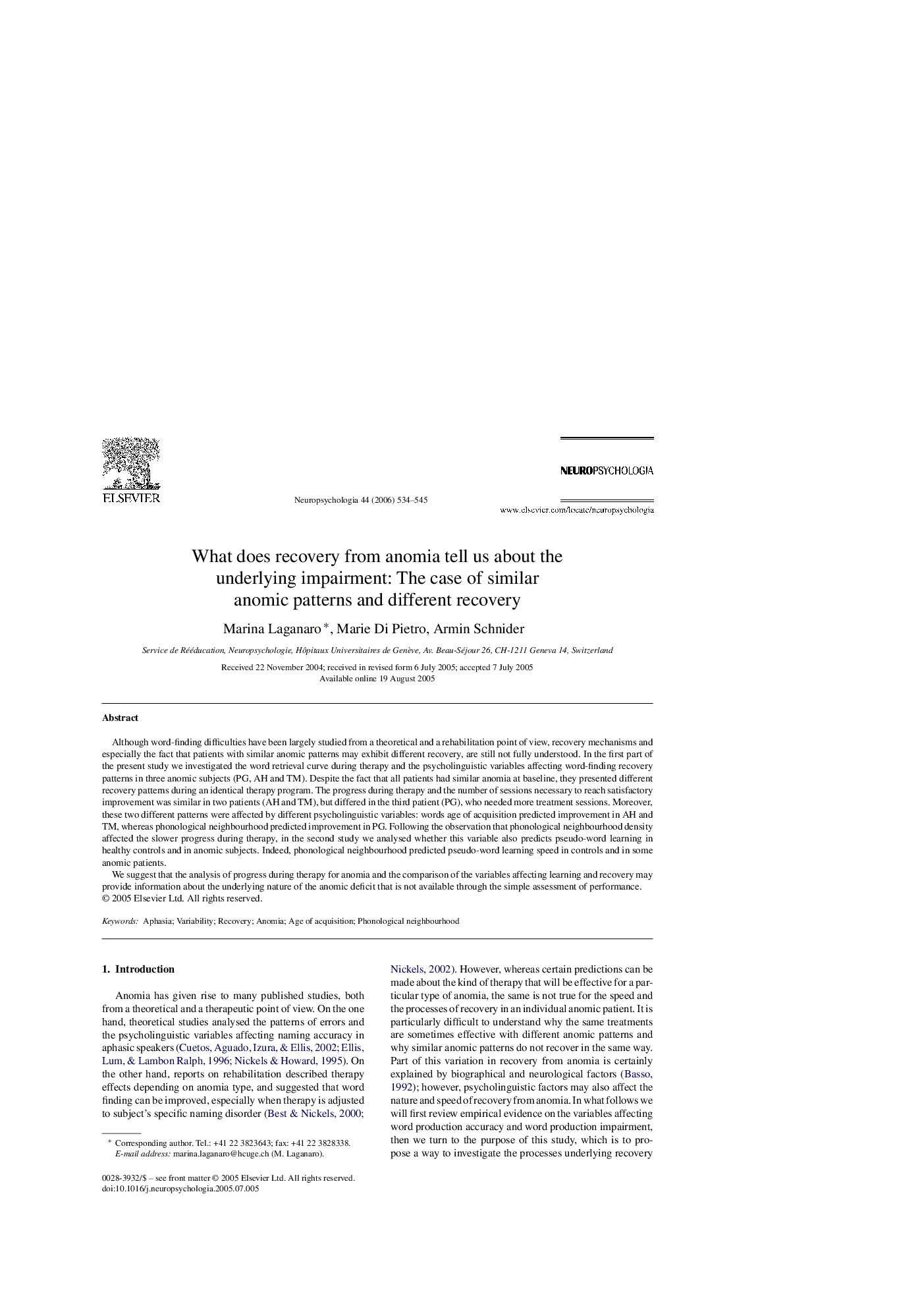| Article ID | Journal | Published Year | Pages | File Type |
|---|---|---|---|---|
| 945879 | Neuropsychologia | 2006 | 12 Pages |
Although word-finding difficulties have been largely studied from a theoretical and a rehabilitation point of view, recovery mechanisms and especially the fact that patients with similar anomic patterns may exhibit different recovery, are still not fully understood. In the first part of the present study we investigated the word retrieval curve during therapy and the psycholinguistic variables affecting word-finding recovery patterns in three anomic subjects (PG, AH and TM). Despite the fact that all patients had similar anomia at baseline, they presented different recovery patterns during an identical therapy program. The progress during therapy and the number of sessions necessary to reach satisfactory improvement was similar in two patients (AH and TM), but differed in the third patient (PG), who needed more treatment sessions. Moreover, these two different patterns were affected by different psycholinguistic variables: words age of acquisition predicted improvement in AH and TM, whereas phonological neighbourhood predicted improvement in PG. Following the observation that phonological neighbourhood density affected the slower progress during therapy, in the second study we analysed whether this variable also predicts pseudo-word learning in healthy controls and in anomic subjects. Indeed, phonological neighbourhood predicted pseudo-word learning speed in controls and in some anomic patients.We suggest that the analysis of progress during therapy for anomia and the comparison of the variables affecting learning and recovery may provide information about the underlying nature of the anomic deficit that is not available through the simple assessment of performance.
